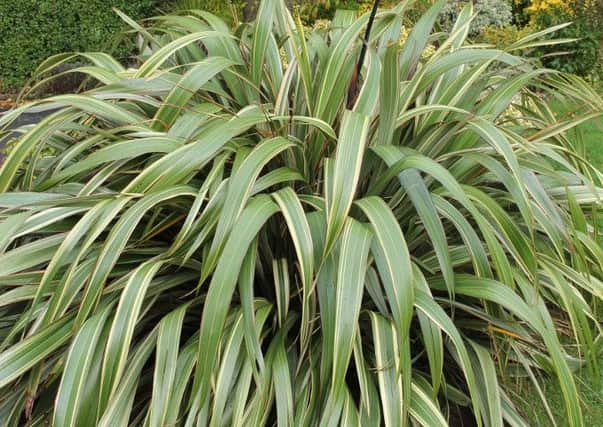Beware '“ pretty plants can turn to monsters


I could not resist the variegated New Zealand flax (phormium) that caught the eye one bright, spring morning as we walked around the local garden centre.
I picked up the plant and tapped the top edge of its pot to check the root system. Free from circles and ready to romp away in the garden, I paid a reasonable price, and knew the exact spot it would stand.
Advertisement
Hide AdAdvertisement
Hide AdTwelve years later, we have had value for money, the metre-long, strap-like leaves providing year-round colour, and huge flowering spikes having great visual impact.
The problem is that it had become too successful and was beginning to bully less vigorous plants nearby. Winter aconites, heathers, snowdrops, dwarf narcissi and cyclamen were becoming smothered and the leaves became whips in the wind. The pretty phormium had turned into a monster.
But how do you remove a deeply rooted plant, capable of 2m growth in height and width?
This plant is a tough cookie and you need gloves when handling the leaves to avoid laceration. In its native land the fibrous leaves were first used by the Maori people to make baskets and textiles, a testament to the durability.
Advertisement
Hide AdAdvertisement
Hide AdFirst step was to remove all leaves to the lowest point and expose the broad heart of the plant. This was done with a sharp knife and revealed where the garden snails were overwintering.
This left the perennial root system and potential for new growth, which we don’t want. The easy option would be to reach for a brushwood herbicide, but there is a resolve to avoid such things in this garden so it’s down to the spade and some healthy exercise, but not all in one go.
Years ago, someone must have thought it a good idea to plant the green-leaved native ivy, Hedera helix, on an embankment nearby. Over time it has colonised the area. Adventitious roots have taken hold as the plant covered the ground, entered the garden via a hedge and started to climb the tree trunks.
True ground-covering plants, such as the herbaceous geranium and heather, do a good job in smothering annual weeds, but this ivy, although attractive, has become a nuisance.
Advertisement
Hide AdAdvertisement
Hide AdLast week I cleared it from three plants – lilac, flowering currant and holly, starting with the easiest and leaving the most difficult until last.
With a sharp knife in gloved hand, I unwound the hedera, starting from the top and prising away every piece of stem that clung to the main trunk. This completed, the spade came into action, following all roots back to source.
Next up for clearance is the hedge.